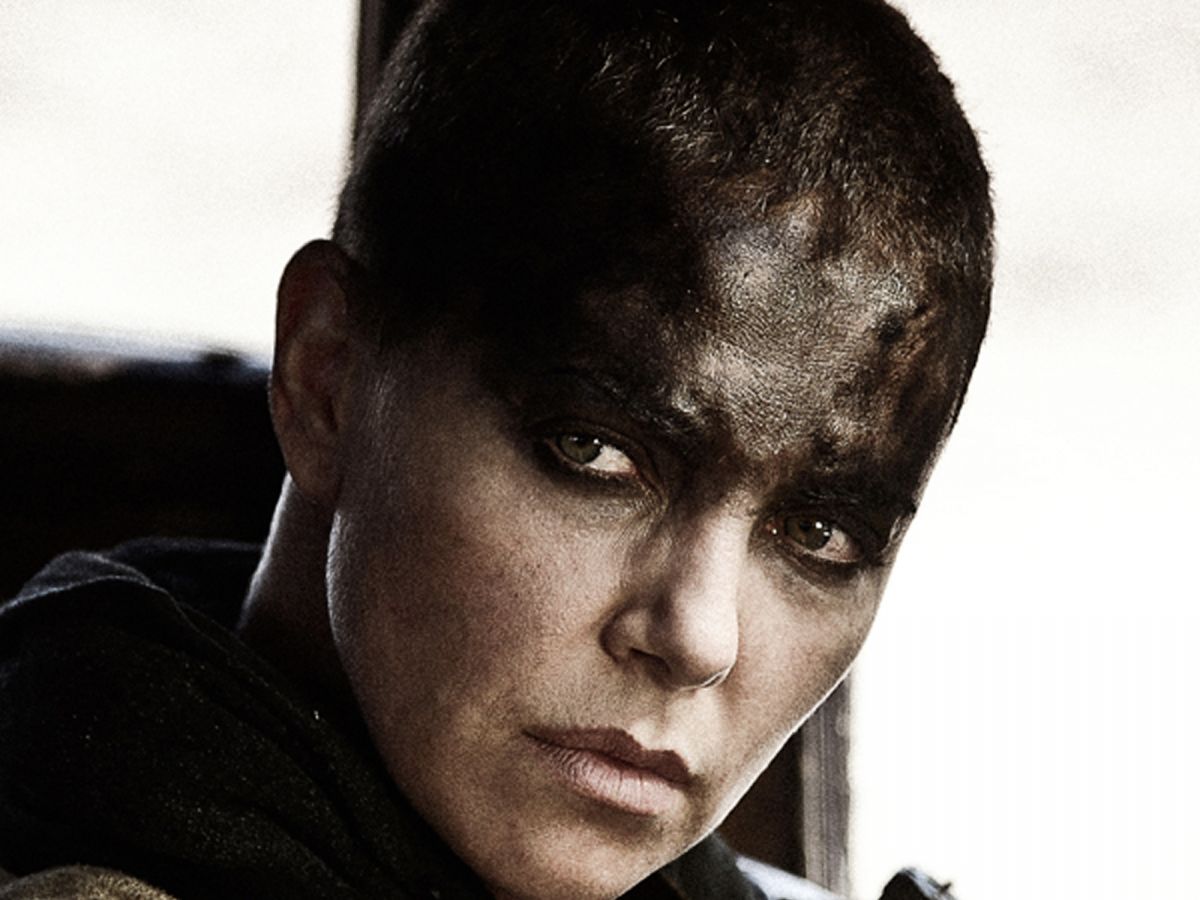
The end of the world is nigh. Or so we’ve been told approximately 300 times, until Armageddon was narrowly avoided thanks to a rogue scientist/ unlikely hero/ band of rebels dreamed up by the incredibly paranoid/ relentlessly hopeful people who make movies.
We’re about to see one more group of rebel heroes attempt to save us from robot-fueled doom in Terminator Genisys, which stomps into theaters July 1. In this new encounter with Sarah Connor (Emilia Clarke), John Connor (Jason Clarke), Kyle Reese (Jai Courtney), and the Terminator himself (Arnold Schwarzenegger), the challenge they face is the some one we’ve been grappling with on-screen since long before the Governator first intoned “I’ll be back.” That is: We’re all doomed!
And yet, every fictional depiction of our demise serves a different purpose, from warning us of the idiocy of nuclear warfare ( Dr. Strangelove) and scaring the crap out of us about the consequences of genetic engineering (every modern zombie movie), to cautioning us against environmental disasters and spinning any number of silly allegories in between.
Here, we gather up the best end-of-the-world stories to hit the screen, and take a shot at analyzing what the point of it all is. You know, other than showing us wicked explosions, fire-breathing demons, and zombie swarms.
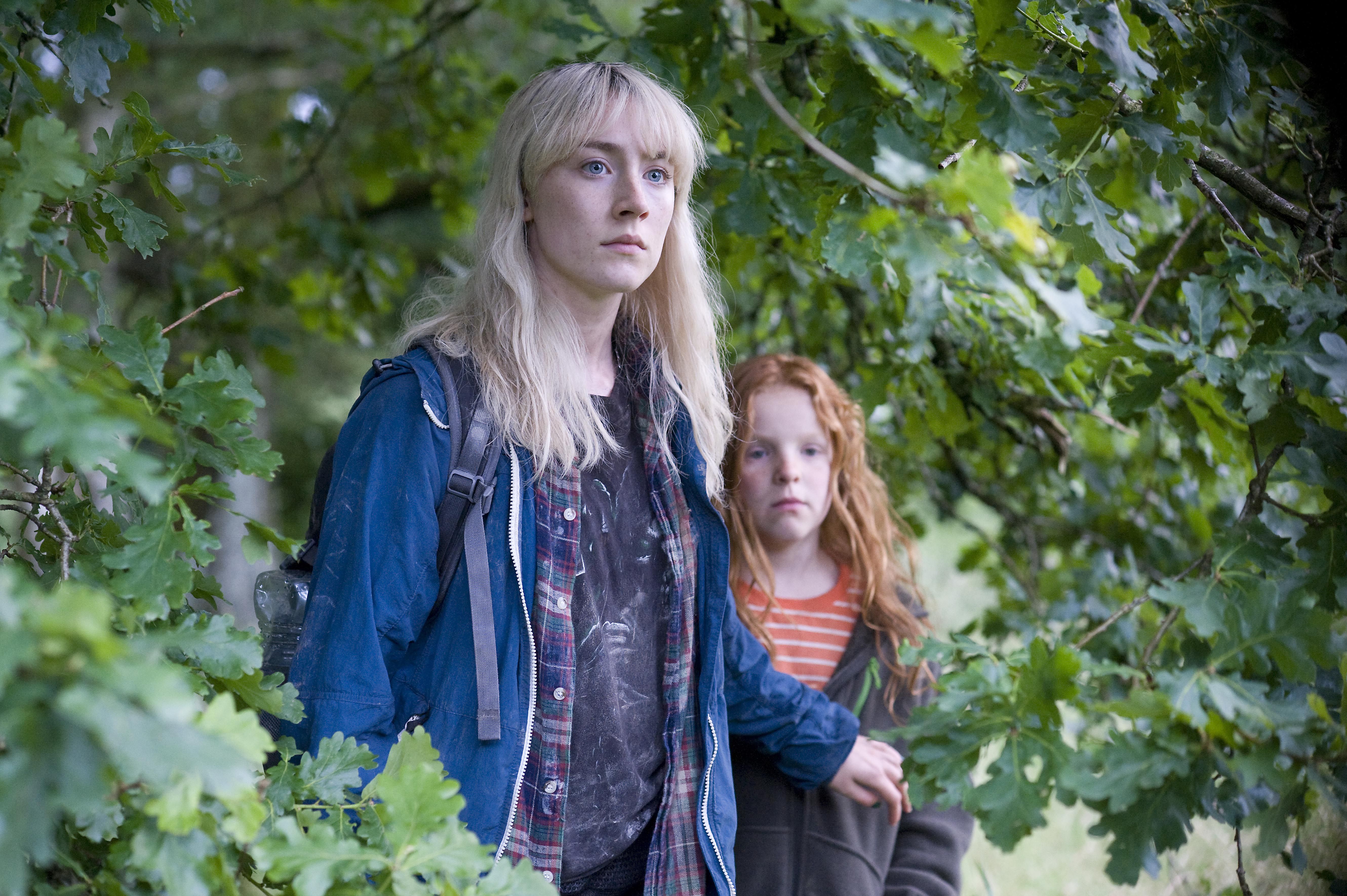
How I Live Now(2013)
How the world ends: Geopolitical conflict and nuclear war. An American teenager (Saoirse Ronan) staying with her cousins in the English countryside is drawn into the fight for survival.
What’s the point? By focusing on ordinary kids and teenagers, the movie makes you consider what your own actions would be in this kind of apocalyptic situation. How quickly would you jump to action?
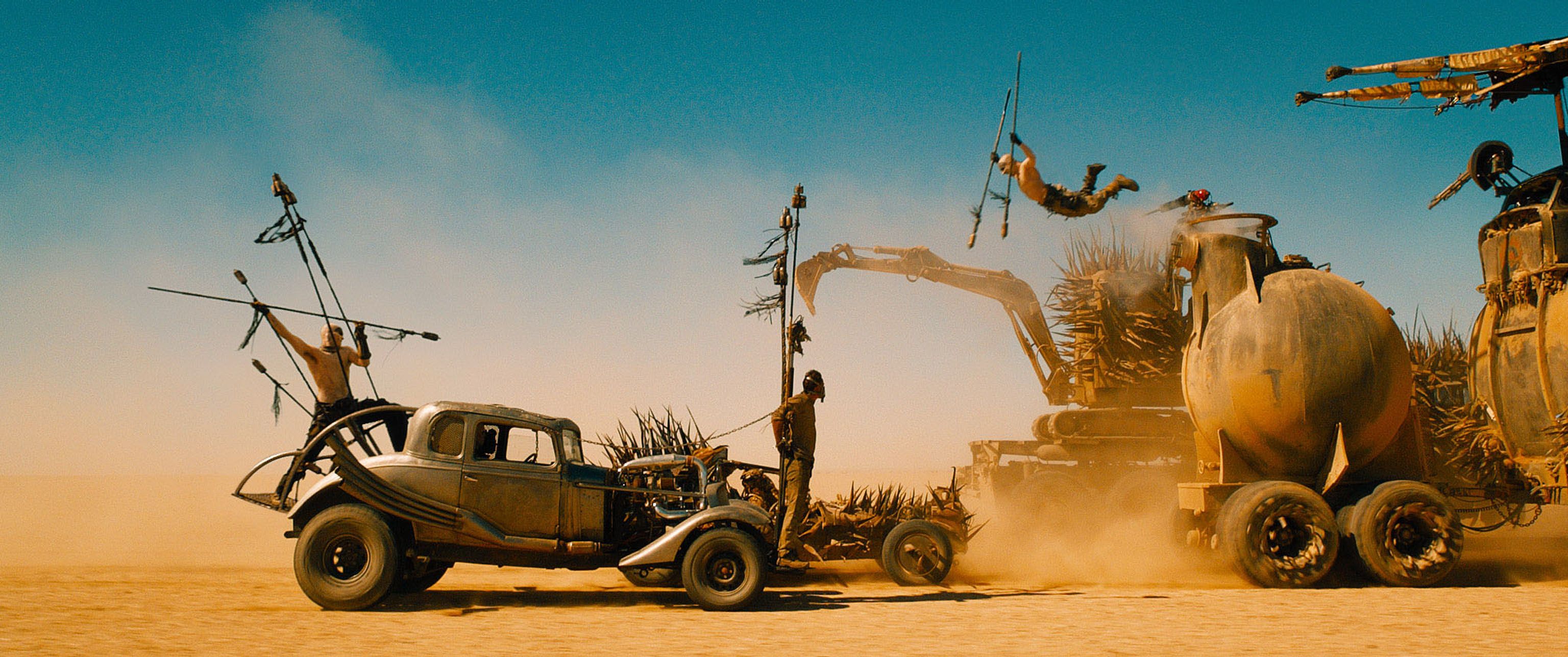
Mad Max: Fury Road(2015)
How the world ends: Nuclear attacks strips the earth of its all-natural green goodness, and renders water and gasoline precious commodities. The movie takes place in a desert fortress ruled over by a maniacal tyrant, the Immortan Joe, where people work in exchange for water.
What’s the point? When commodities are scarce, people are more willing to enter into unbalanced social contracts. Except, of course, if you’re the intrepid Furiosa (Charlize Theron), who still remembers that something better (and greener) exists — if she’s able to outrun Joe’s army on her way there.
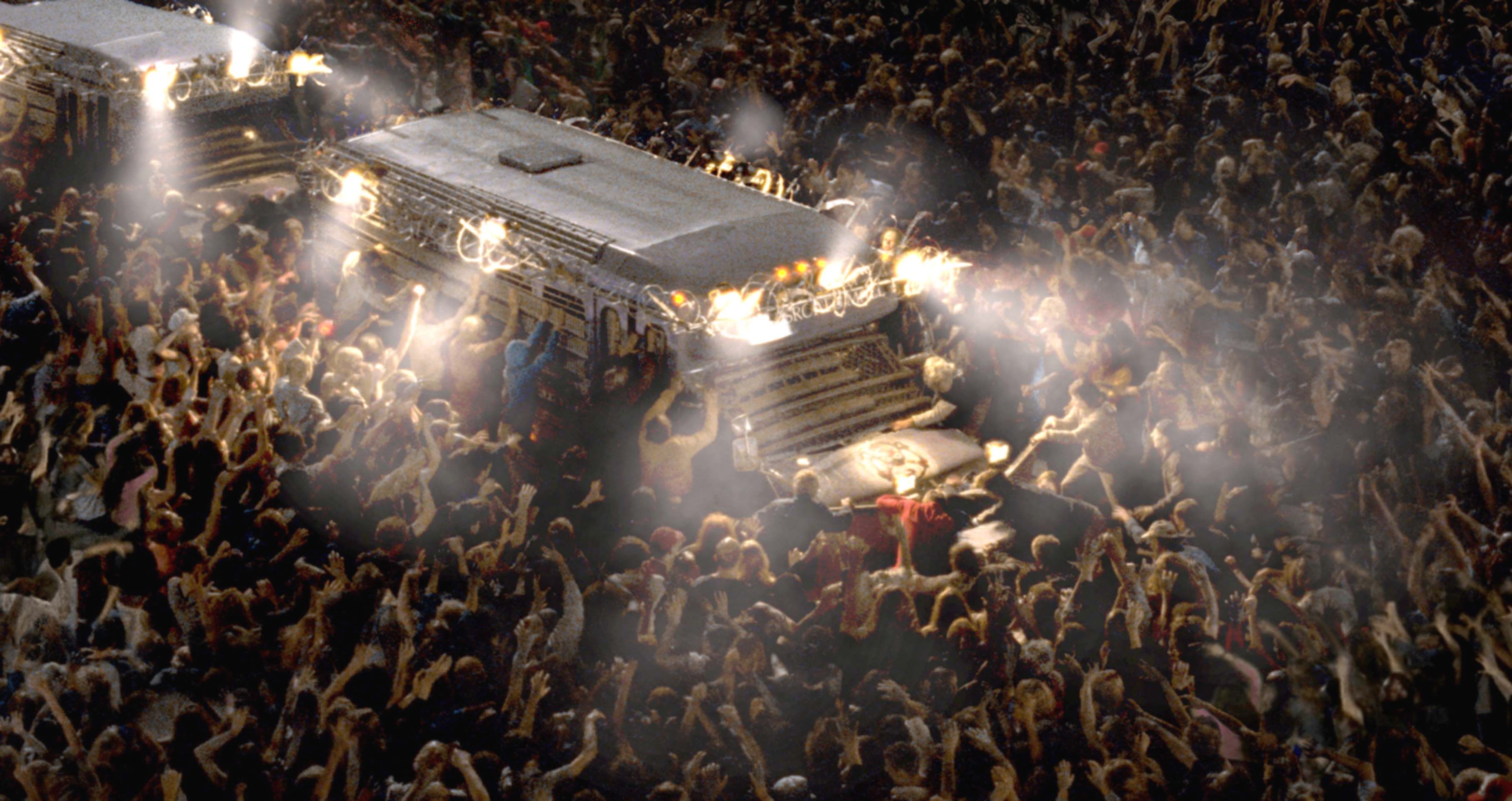
Dawn of the Dead (2004)
How the world ends: Against a mounting zombie apocalypse, a group of people take refuge in a supermarket. But it won’t last for long.
What’s the point? Sometimes, even the most valiant efforts fail us. Death by zombie is inevitable.
Moviestore Collection/REX/Shutterstock
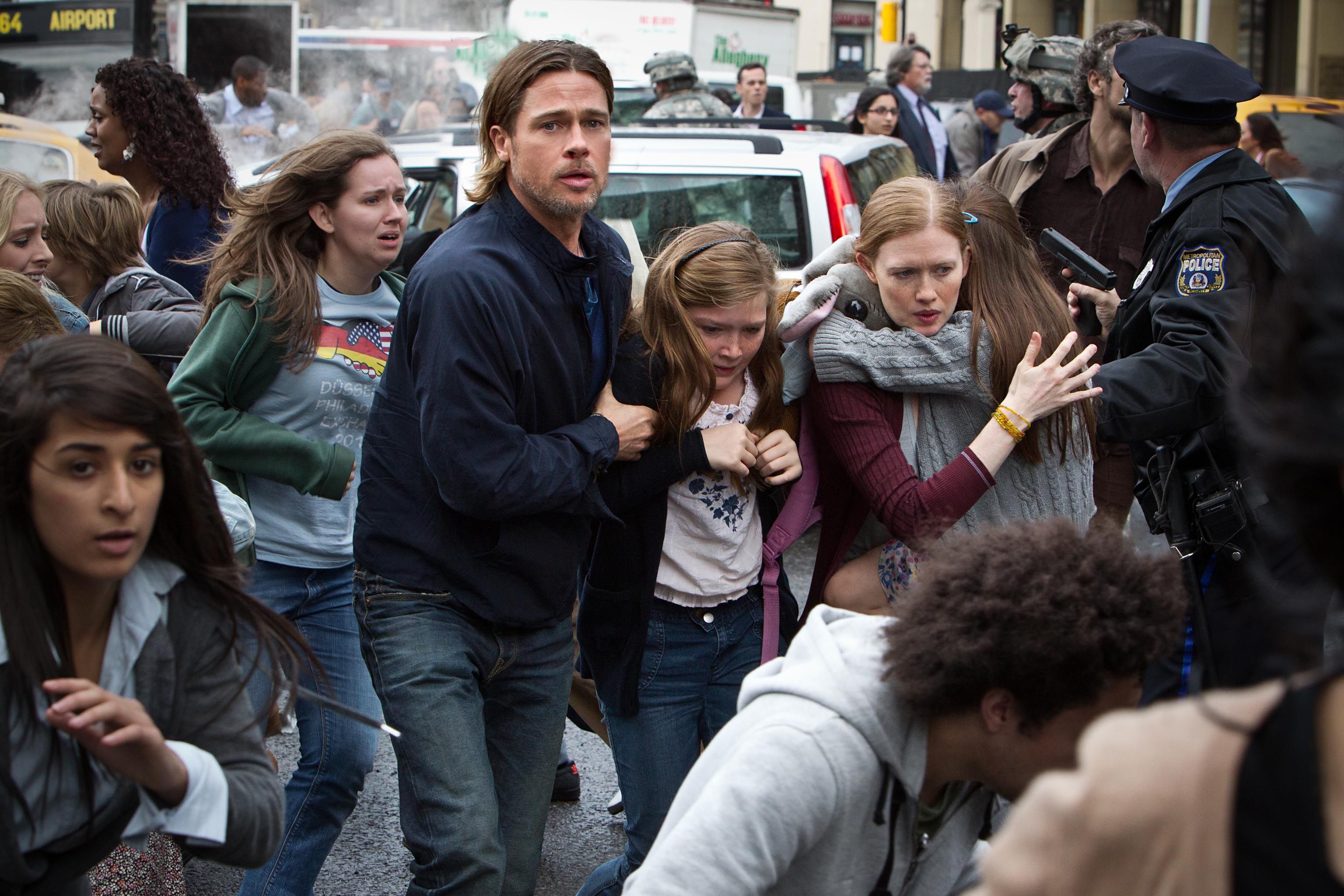
World War Z(2013)
How the world ends:
A massive zombie plague forges a new world order, and changes global politics as we know them. The story is fittingly narrated by a series of accounts from UN operatives.
What’s the point?
Take your pick: When it comes to the zombie apocalypse, we’re all in the same boat. Nationhood is a construct. The UN is more badass than it appears.
Paramount Pictures/REX/Shutterstock
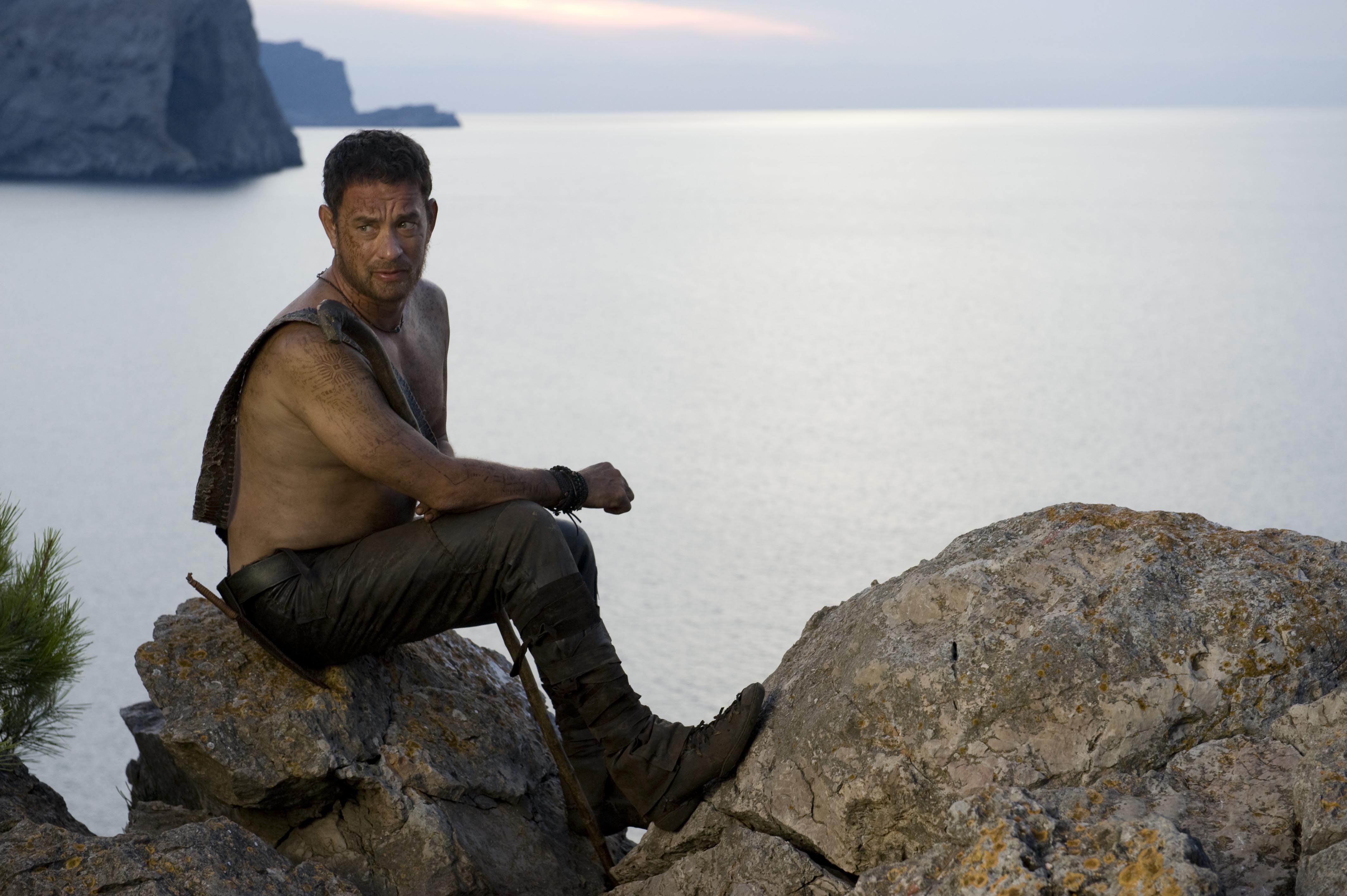
Cloud Atlas(2012)
How the world ends:
We’re not too sure about the mechanics of the apocalypse, but we do know that it’s the year 2321, civilization has collapsed, and people speak a form of pidgin English. Tom Hanks plays a kind hunter-gatherer and Hugh Grant plays a cannibal, so delightful casting overall
What’s the point?
In this epic adaptation of a David Mitchell novel, the same person is reincarnated over the course of six different lives. It shows how the actions of one life is carried over into the next. Their lives culminate in this apocalypse storyline, which indicates how the human race is carried forward.
Warner Bros./REX/Shutterstock
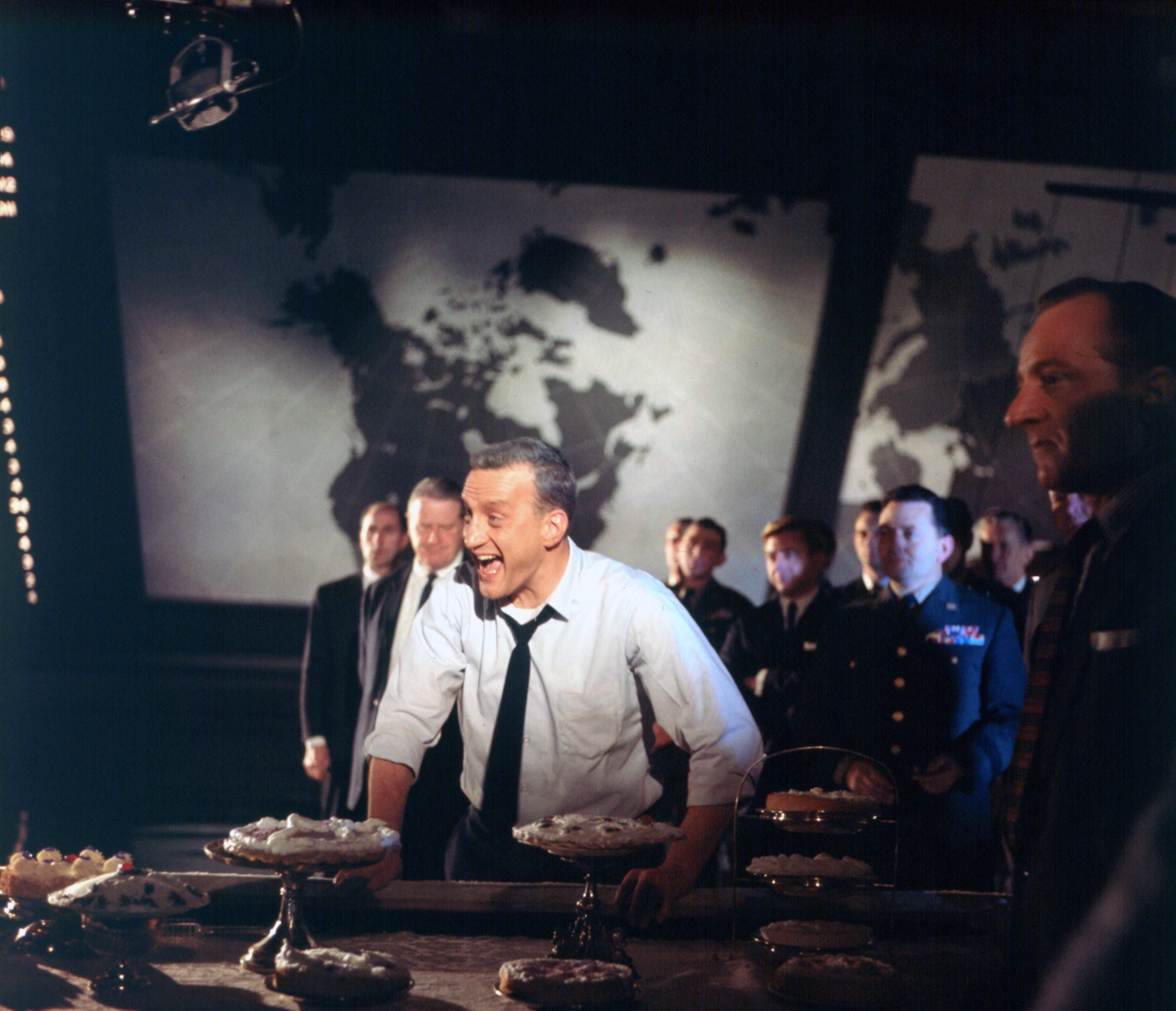
Doctor Strangelove, or: How I Learned to Stop Worrying and Love the Bomb(1964)
How the world ends:
A crazed American general goes full-steam-ahead in an attack on Russia. The catch? The president and his advisors find out that the Russians have a weapon which could annihilate the entire world in the event of American aggression.
What’s the point?
This dark screwball comedy was largely a creative response to the era’s Cold War tensions. With U.S.-Russo relations more of a buzzword than it’s been since the Berlin Wall came down, this acclaimed satire is worth a watch.
Hawk Films Prod/Columbia/REX/Shutterstock
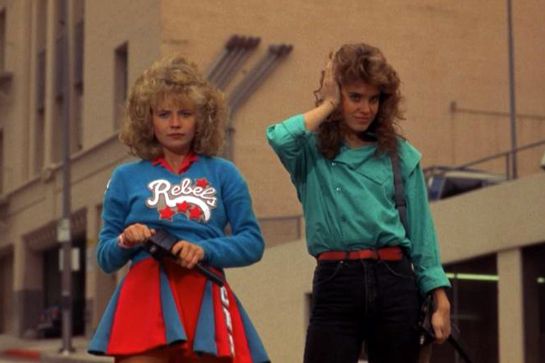
Night of the Comet (1984)
How the world ends:
The same way it did when the dinosaurs went extinct: Earth is in the path of a comet’s tail. Most people turn into piles of dust or zombies; the only ones who escape unscathed it are the ones who were shielded from the cosmic rays by steel.
What’s the point?
This satirical sci-fi comedy teaches us that the end of the world could be hilarious. Also, an apocalypse presents a killer opportunity to shop till you drop — and kick the ass of teenage boy mall employees who have been turned into zombies.
Photo: Courtesy of Atlantic Releasing Corporation.
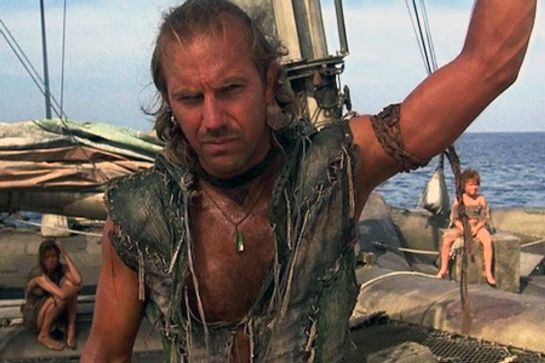
Waterworld (1995)
How the world ends:
The polar ice caps melt entirely, causing the sea level to rise so high that it covers almost all land on every continent. 400 years later, civilization as we know it is underwater, and the only living humans survive on floating mini-communities. They talk about “Dryland” like a mythical paradise that exists somewhere.
What’s the point?
You have to adapt to survive. (Kevin Costner’s sailor has developed gills and webbing through a mutation.) On a different note, we shouldn’t take the seemingly infinite supply of basic environmental resources we have at our disposal now — like dry land for farming and potable water for drinking — for granted. And global warming could affect generations long after we die. Oh, and learn how to swim, just in case.
Photo: Courtesy of Universal Pictures.
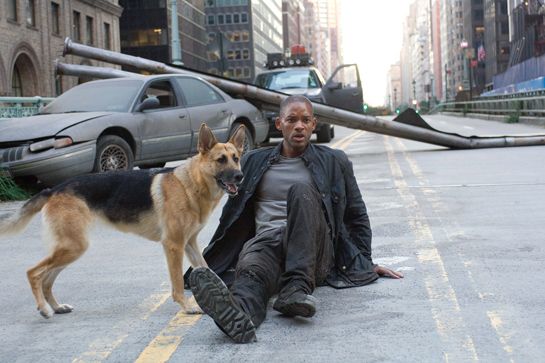
I Am Legend (2007)
How the world ends:
Scientists genetically engineer a measles virus in an attempt to cure cancer. Instead, they create a super-strain of the virus that kills almost the entire population — and turns many of the remaining humans into nocturnal mutants called “Nightseekers.” Smith lives virtually alone in a quarantined, dilapidated New York City.
What’s the point?
Even in pursuit of a noble cure, we need to be extremely cautious with experimental treatments because nature is unpredictable. Also, intrepid action-stars like Will Smith and loyal German shepherds are the kind of company you want to keep in the case of an apocalypse.
Photo: Courtesy of Warner Bros./Roadshow Entertainment.
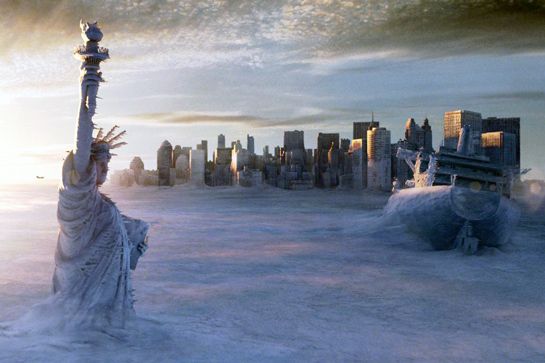
The Day After Tomorrow (2004)
How the world ends:
Global warming, unpredictable weather events and the willful ignorance of politicians.
What’s the point?
Climate change is real, people! Yes, Jake Gyllenhaal and Emmy Rossum manage to get all cozy while hunkering down in the middle of a mega ice-storm engulfing New York City. But their love story is matched by the more universal and realistic story of people refusing to listen to the dire predictions of climate scientists about the future of planet Earth.
Photo: Courtesy of 20th Century Fox.
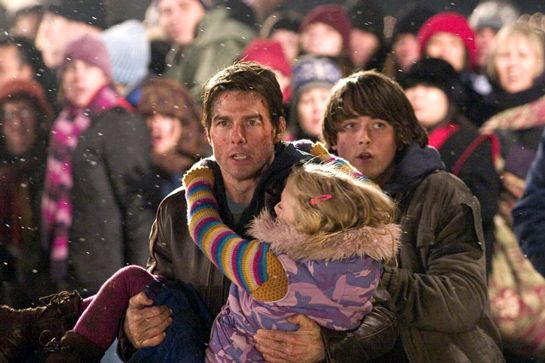
War of the Worlds (2005)
How the world ends:
Giant tripod war machines emerge from underground, having been stored under the Earth’s surface for some time. Aliens enter the tripods via lightning bolts and use them to stomp all over cities (and shoot people with laser beams, of course).
What’s the point?
Family is everything. Ray (Tom Cruise) is not too popular with his kids (Dakota Fanning and Justin Chatwin), but they have to band together to survive. Also, war creates fear — and fear creates chaos. When everybody chooses flight over fight, who will save us?
Photo: Courtesy of Paramount Pictures.
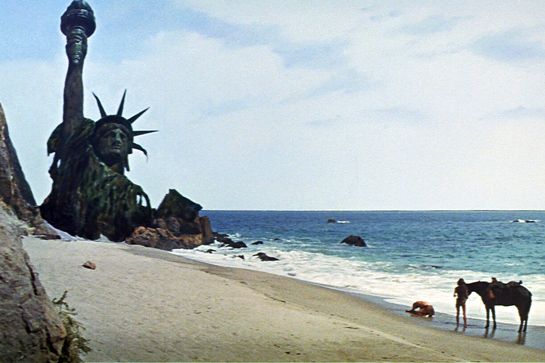
Planet of the Apes(1968)
How the world ends:
Perhaps the best part about the original Apes movie — co-penned by Rod Serling, of Twilight Zone fame — is the final twist. For the whole movie, all we know is that the human astronauts crash-landed on a strange alien planet ruled by apes. It isn’t until the final scene when Taylor (Charlton Heston) discovers the ruins of the Statue of Liberty that it’s revealed they’ve been on Earth the whole time — and that humanity destroyed itself in a nuclear warfare.
What’s the point?
What seems like a far-off, foreign future could actually be right around the corner for humanity. At the time, the film was hitting on Cold War fears of the worst-case scenario: a nuclear apocalypse. But the lesson holds true today, too. We could destroy our civilization — and lose it all to the apes — if we can’t get along.
Photo: Courtesy of 20th Century Fox.
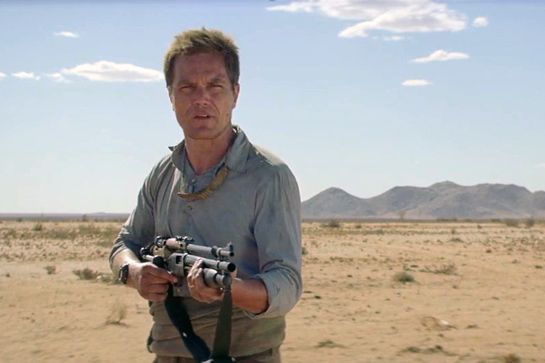
Young Ones (2014)
How the world ends:
Drought is the culprit in this sci-fi Western. Water and food are scarce for all but a lucky few, the “water men.” People fled the farmlands after it became a desert, but Ernest Holm (the riveting Michael Shannon) stubbornly keeps his family (including a daughter played by Elle Fanning) on the farm in hopes of securing irrigation.
What’s the point?
It’s optimal to sell your farm before the drought hits; those who control the water have all the power; dehydration will drive you mad; and seemingly reasonable men (including a seedy fellow played by Nicholas Hoult) can become shockingly violent when it comes to defending themselves and their families.
Photo: Courtesy of Screen Media Films.
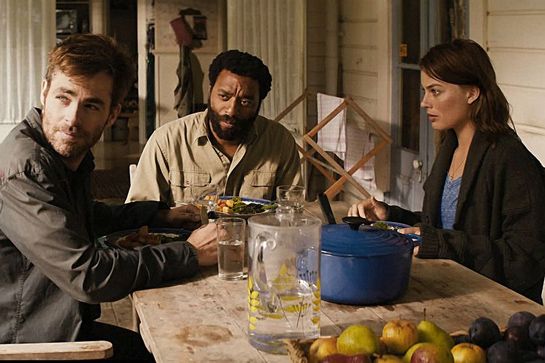
Z For Zachariah (2015)
How the world ends:
Nuclear war, of course. Those not killed on impact died from radioactivity. Lone survivor Ann (Margot Robbie) is making do on a farm in a valley shielded by hills, weather patterns, and ground water.
What’s the point?
To show us that in the event of an apocalypse, testosterone is a liability. Ann is doing just fine until scientific engineer Loomis (Chiwetel Ejiofor) comes along. And all is well until the arrival of Caleb (Chris Pine). The men pound their chests and act like jealous assholes in competition for the last woman alive. Long story short: Ladies, we need to stick together.
Photo: Courtesy of Lionsgate Films.
Like this post? There’s more. Get tons of celebrity news, fun takes on pop culture, and trending stories on the Refinery29 Entertainment Facebook page. Like us on Facebook — we’ll see you there!

The Terminator Franchise (1984, 1991, 2003, 2009, 2015)
How the world ends:
The U.S. makes a big boo-boo in creating an artificially intelligent defense system (Skynet) that is so advanced, it becomes self-aware and decides to decimate all of mankind — initially by dropping nuclear bombs on Russia to provoke a counterattack.
What’s the point?
To show how much one individual and her son can impact the future of the world. Also, to make us terrified of robots.
PHOTO: COURTESY OF PARAMOUNT PICTURES.
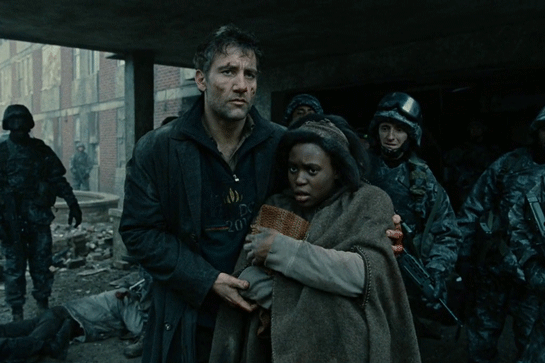
Children of Men (2006)
How the world ends:
Infertility in women, though the cause is never explained. With no children in the world, and thus no future, society deteriorates.
What’s the point?
One poor, pregnant woman (Clare-Hope Ashitey) is discovered and becomes a symbol of hope for all mankind. It’s one big “I believe the children are our future” message wrapped in an awesome action movie.
PHOTO: COURTESY OF UNIVERSAL PICTURES.
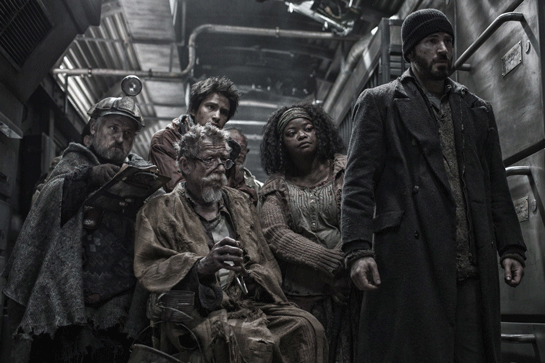
Snowpiercer (2013)
How the world ends:
A chemical released into the atmosphere to reverse global warming backfires and freezes the planet. All that’s left of humanity lives on a train that perpetually circles the globe.
What’s the point?
It’s a harsh allegorical take on class warfare, and the bureaucrats and scientists who think the poor aren’t their problem.
PHOTO: COURTESY OF SNOWPIERCER.
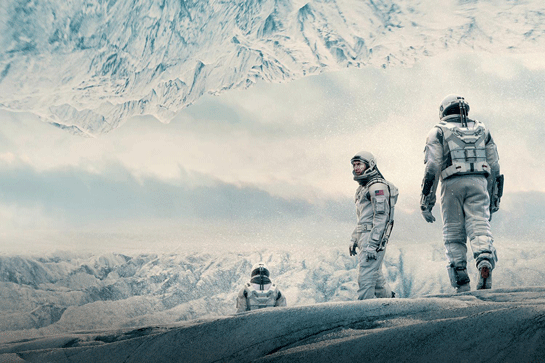
Interstellar (2014)
How the world ends:
Nitrogen-breathing microorganisms gradually kill off the world’s crops, slowly starving and choking every other living thing on Earth.
What’s the point?
The world’s end is a convoluted excuse to get to the fun stuff: time travel and space exploration through wormholes, and the importance of love, even to fancy NASA scientists.
PHOTO: COURTESY OF PARAMOUNT PICTURES.
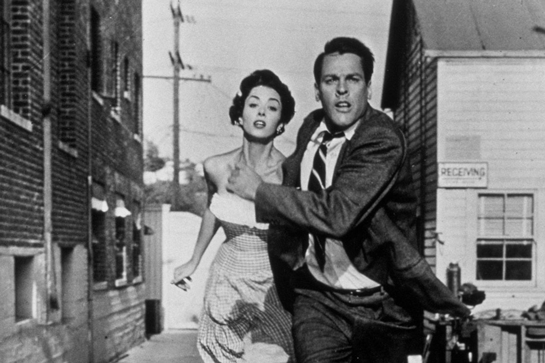
Invasion of the Body Snatchers(1956)
How the world ends:
An alien life form plants pods that absorb each person’s appearance and memories in their sleep, replacing them with a calm, emotionless version of their normal human selves.
What’s the point?
Don’t let outside forces (i.e. The Man!) turn you into a conforming “pod person” — fight to stay yourself at all costs.
PHOTO: COURTESY OF WALTER WANGER PRODUCTIONS.
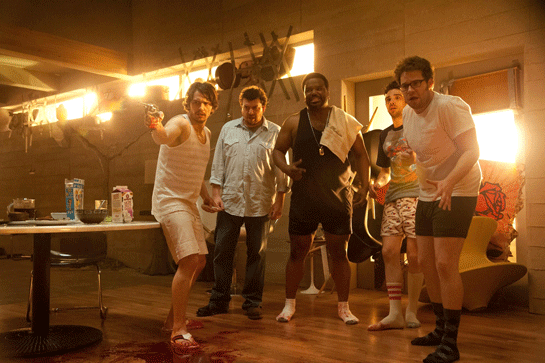
This Is the End(2013)
How the world ends:
Massive earthquakes, fires, and giant beasts from hell, straight out of the Bible. Meanwhile, all the good guys get beamed up to heaven.
What’s the point?
This all goes down during a crazy bender at James Franco’s house, offering a winking glimpse into how these comedians cope — cooperate, turn on each other, cower like children, and, yeah, do all the drugs — when the shit hits the fan.
Photo: Courtesy of Columbia Pictures.
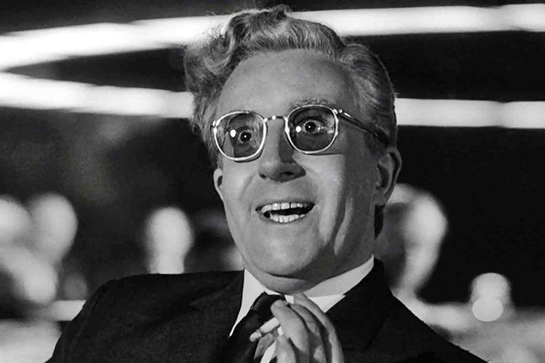
Dr. Strangelove or: How I Learned to Stop Worrying and Love the Bomb (1964)
How the world ends:
Air Force General Jack D. Ripper (Sterling Hayden) goes nuts and thinks the Soviets are poisoning us via fluoridated water, and it just so happens he has the power to order a nuclear attack without the president’s authorization. The U.S. and USSR figure out the error, but it’s too late to reverse the process because the Russians have installed a doomsday device that automatically destroys all life on the surface of the Earth if their country is attacked.
What’s the point?
To underscore that the concept of mutually assured destruction (if both countries could wipe each other out, no one will strike first), is so dangerous and absurd, all we can do is laugh about it.
PHOTO: COURTESY OF COLUMBIA PICTURES.
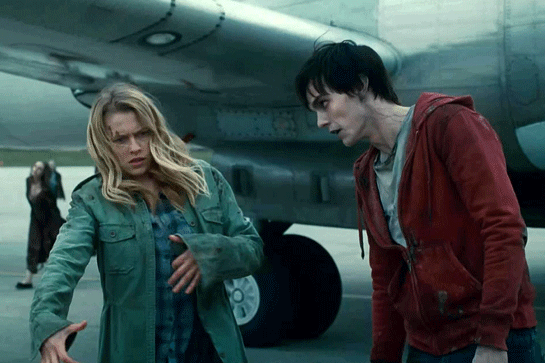
Warm Bodies (2013)
How the world ends:
The cause of the zombie virus outbreak is never really explored, though the important thing to know here is that zombies aren’t entirely without human feeling. Surviving people have been forced to carve out their existence in a fortified stadium.
What’s the point?
True love — and eating the brains of a true love — can conquer almost anything, even a zombie virus. And it’s important to look past the color of others’ skin, even if it’s gray and rotting.
PHOTO: COURTESY OF SUMMIT ENTERTAINMENT.
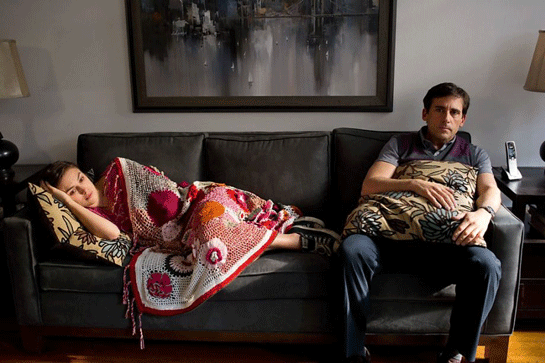
Seeking a Friend for the End of the World(2012)
How the world ends:
An asteroid is headed straight for us, and all efforts to divert it have already failed.
What’s the point?
It’s actually quite fun to imagine what you’d do — and what you would stop doing — if you knew with absolute certainty that the world would end in three weeks.
PHOTO: COURTESY OF FOCUS FEATURES.
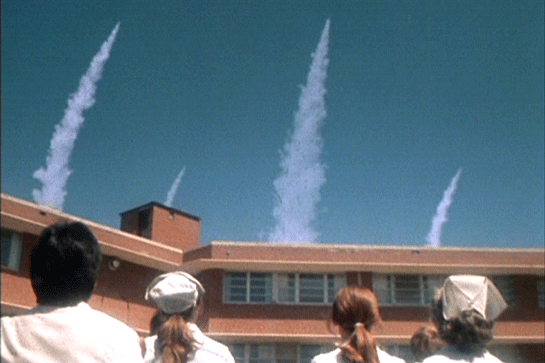
The Day After (1983)
How the world ends:
The Cold War heats up when the Soviets threaten to invade West Germany and peace talks fail. The USSR and the U.S. bomb each other almost simultaneously. In the aftermath, many survivors of the blasts suffer from radiation poisoning.
What’s the point?
This massively popular TV movie succeeded in scaring the whole country anew about how rapidly war could escalate — even President Reagan and the Joint Chiefs of Staff were moved by the film.
PHOTO: COURTESY OF ABC CIRCLE FILMS.
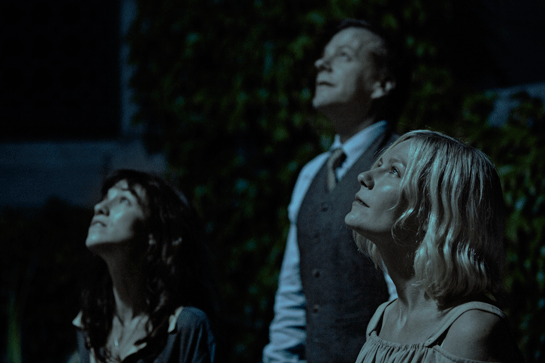
Melancholia(2011)
How the world ends:
A rogue planet enters our solar system and collides with Earth.
What’s the point?
As director Lars von Trier sees it, depressed people like Justine (Kirsten Dunst) actually rejoice in the end of the world; it’s confirmation of all their melancholic thoughts. Happy people like Justine’s sister Claire (Charlotte Gainsbourg), on the other hand, are the ones with too much to lose.
PHOTO: COURTESY OF ZENTROPA ENTERTAINMENTS.
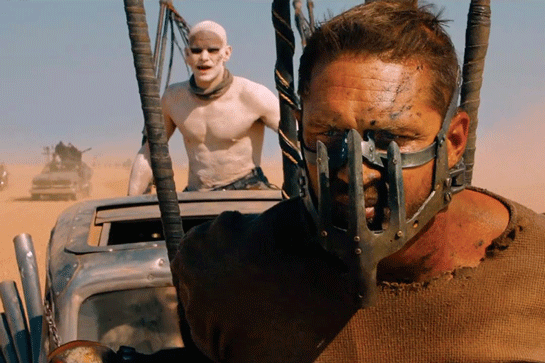
The Mad Max Franchise (1979, 1981, 1985, 2015)
How the world ends:
Scarce resources lead to oil wars and the collapse of civilized society. There’s some nuclear warfare thrown in the mix, too.
What’s the point?
Well, besides showing us a lot of car chases through deserts and a bunch of cool costumes, these movies ponder what might happen to mankind if we were reduced to our primitive nature. Would only the toughest survive?
PHOTO: COURTESY OF KENNEDY MILLER PRODUCTIONS.
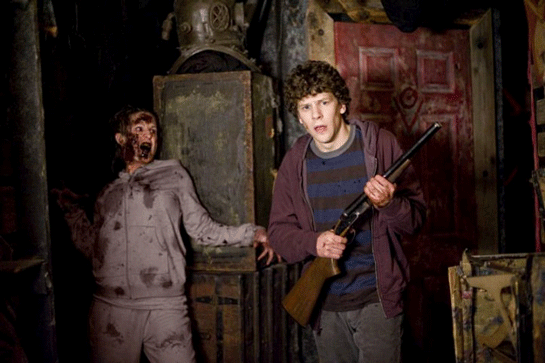
Zombieland (2009)
How the world ends:
Mad cow disease mutates into a human zombie virus and wipes out most of the population within two months.
What’s the point?
To show how a regular guy like Jesse Eisenberg’s Columbus can survive by laying low and not being a hero. But when he does decide to rise to the occasion and actually care about others, survival actually has more appeal.
PHOTO: COURTESY OF COLUMBIA PICTURES.
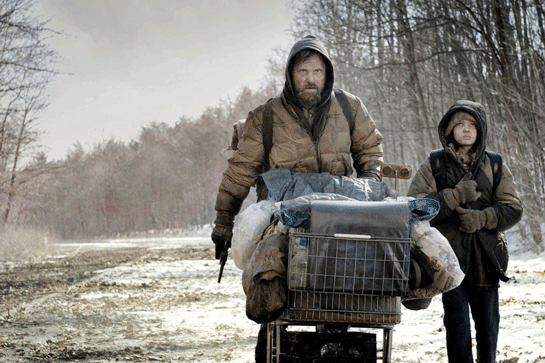
The Road (2009)
How the world ends:
We have no idea what causes it, but everything’s cold, the sun doesn’t come out, and all plant and animal life has died. At this point, everyone’s just roaming the earth in search of old canned food, or other people to eat.
What’s the point?
The unnamed man (Viggo Mortensen) lives only to keep his son (Kodi Smit-McPhee) alive. He tries to teach the boy how to remain good and human without descending into savage instincts like others they encounter, because survival is about more than just the body.
PHOTO: COURTESY OF DIMENSION FILMS.
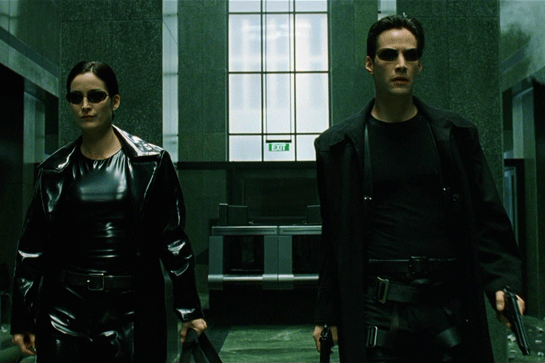
The Matrix Trilogy(1999, 2003)
How the world ends:
The seemingly inevitable conflict between sentient machines and humans escalates so far that humans first decide to block out the sun (eliminating the machines’ access to solar power), then to deploy nuclear missiles. The machines retaliate with a flesh-eating plague and more bombs. Finally, they enslave the surviving humans as their new power source.
What’s the point?
To give us the creeps about virtual reality and our reliance on technology, and to burst open our minds about different levels of perception.
PHOTO: COURTESY OF WARNER BROS.
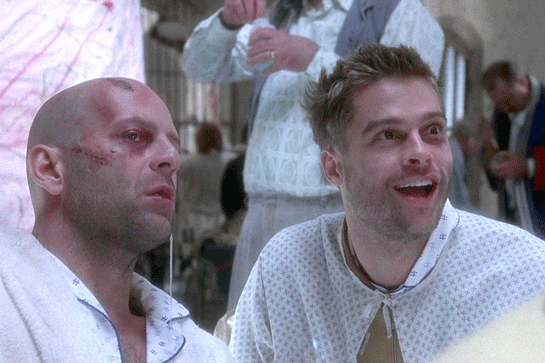
12 Monkeys (1995)
How the world ends:
A deadly virus that may or may not have been unleashed by an animal rights group has wiped out most of mankind. The survivors live underground and have figured out time travel in the meantime.
What’s the point?
Traveling back in time to stop this cataclysm from happening is actually much harder than you think, especially if you don’t have all your facts straight. Oops.
Photo: Courtesy of Universal Pictures.
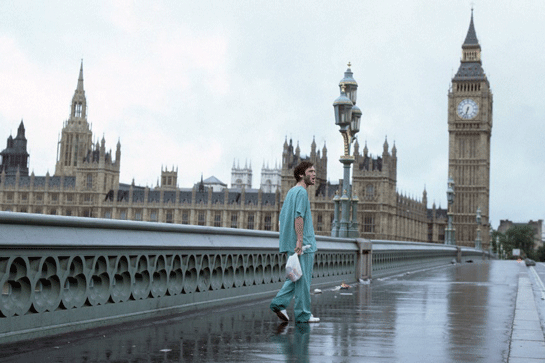
28 Days Later(2003)
How the world ends:
Animal rights activists (again!) raid a lab to free chimpanzees, which happen to be infected with a virus called “Rage” that spreads from the activists to most of Great Britain. The infected become rabid zombies. As you might guess from the presence of a sequel (2007’s 28 Weeks Later), it doesn’t stop there.
What’s the point?
To reveal that zombies aren’t the only monsters around, as exhibited by the military’s “solution,” which involves using women as sex slaves.
PHOTO: COURTESY OF DNA FILMS.
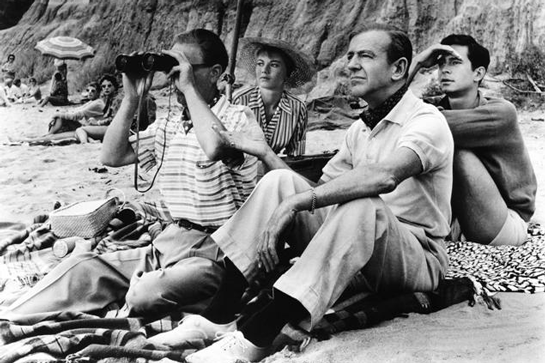
On the Beach (1959)
How the world ends:
Nuclear bombing during World War III has wiped out the Northern Hemisphere, and the fallout is now traveling south, killing everyone with radiation sickness. In Australia, people are given suicide pills to take when they choose.
What’s the point?
This plea to prevent nuclear warfare (based on a 1957 novel) was even screened in Moscow at the time of its release, and it ends with the message “There is still time… Brother.” So that’s kind of straightforward.
PHOTO: COURTESY OF STANLEY KRAMER PRODUCTIONS.
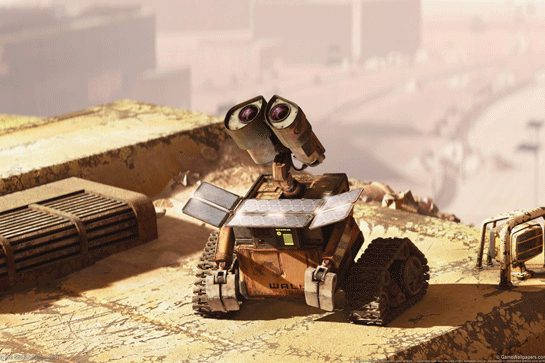
WALL-E(2008)
How the world ends:
Thanks to efficient mega-corporations, humans finally buy so much useless stuff that the whole world becomes an uninhabitable trash heap. Humans take off into space stations leaving behind robots to clean up their mess, but the mechanical creatures decide that’s not worth the bother, either.
What’s the point?
To cast a critical eye on excessive consumerism, and to show that love can grow in even the bleakest of conditions.
PHOTO: COURTESY OF PIXAR.
Click HERE to read more..
Vote for Shikha Dhingra For Mrs South Asia Canada 2017 by liking her Facebook page.
You can publish this article on your website as long as you provide a link back to this page.


Be the first to comment